It is a little bit complicated when interviewing a team who speak neither English nor French. So it was with the Japanese Great Sky Art association. A translator who spoke French and Japanese was provided to allow the team to work effectively with the local La Ronde crew and also to help in the case of media interviews. I have a more or less “standard” list of questions, so I spoke with the translator, Nami Imaie, before the interview in order to provide a foundation of what I was looking for. The challenge here is that she was not overly familiar with the terms used in pyrotechnics, so it took some explanations before hand so that she could prepare the questions in Japanese. I hope not too much was “lost in translation” as we went from English->French->Japanese->French->English. In the end, it was quite funny as some terms such as “firing system”, “position” and “cue” were used as-is in Japanese, so no translation was needed.
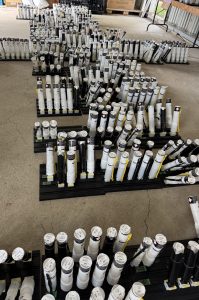
I spoke with Ryo Oya, a pyrotechnician who has a company called Pyrosmith and was the main designer of the display. The Great Sky Art association actually represents eight diverse manufacturers from across Japan, each with their own speciality. Great Sky Art is not a display company in the conventional sense, but an association of master pyrotechnicians from across Japan (more details can be found on their facebook page here: https://www.facebook.com/greatskyart). Their pride in being selected to represent Japan in Montreal was evident and they had created a crowdfunding campaign hoping to reach 10M Yen (approximately Can$95k) in order to show the best of Japanese fireworks.
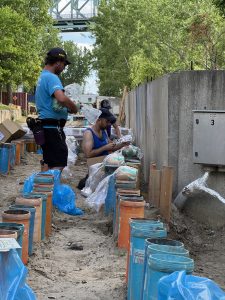
Japan is renowned for their shells and 100% of the approximately 3200 in the display are from the eight manufacturers, however all of the 1000 or so one-shots are from the Spanish company Europla. A very small number of cakes are of Chinese origin too. I had been hoping to see some 300mm shells in the display but it seemed that it had not been possible to ship this to Montreal this time, though there will be 69 200mm shells. These are still very large shells and will feature different special effects depending on the manufacturer and I believe will include what Ryo described as “rapid colour changes” which I think translates as the “ghost effect” shells that Japan has become famous for.
The team is using PyroDigital as their firing system and the setup is the most complex so far this year with 25 positions on ramp 3; ten positions each on the left and right access ramps to ramp 3; 24 positions on ramp 4 (arranged in the form of a heart – though Ryo said this would be best viewed from the air); ramp 2 will have 9 positions (many companies use 5 positions here) and all five of the floating pontoons forming ramp 5 will be in-play.
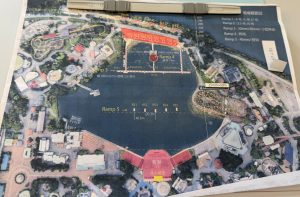
The soundtrack design is a bit different to “western” pyromusicals as the Japanese display tradition is quite different. Ryo explained that Japanese audiences are used to a slower pace of display where each intricate shell can be appreciated individually for its design and beauty. The soundtrack is designed, therefore, to show the traditional Japanese approach in the first half, culmination in “New Genesis – Uta from ONE PIECE FILM RED – Ado” before transitioning in the mid-point of the display to a tribute to Montreal with Céline Dion’s Hymne à lʼamour performance from the Paris Olympics. The second half of the display will feature what Ryo described as “modern Japanese pyrotechnics” with music from anime films. He said he was particularly looking forward to the “Two-Hundred-Meter Blade (TV edit) – Maximum the Hormone” piece which is the penultimate segment before the finale.
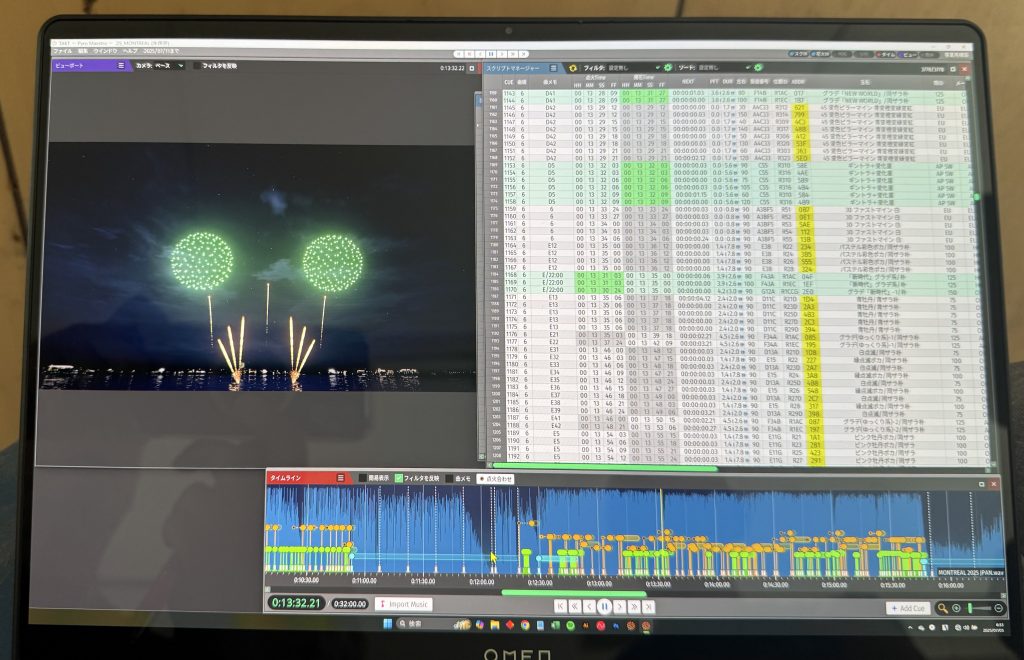
The entire display was choreographed with visualization software that Ryo had designed called Pyro Maestro and he demonstrated part of the New Genesis segment. I didn’t watch too much as I wanted the display to retain its surprise elements! The design process for the display had begun in January and had to completed by the end of April so the show could be put on a container ship at the beginning of May.
For the laser segments, the design of these was left to the local company, Laser Quantum, to complete. It will be interesting to see how they interpret the more traditional Japanese music parts.
When asked if he was stressed about the competition, Ryo said not really, but he was jet-lagged as he arrived from Japan just in time to see the Italian display last Thursday and then it was time to get to work. He said it’s a bit challenging to work at La Ronde as the way of working is different to Japan and having to rely on a translator adds to the challenge. That said, Ryo does understand many pyrotechnic-related terms in English and the team’s setup book was very impressive and detailed, containing several hundred pages. Ryo had worked in Montreal before – he was part of the crew of Aoki Fireworks who competed in 2012.
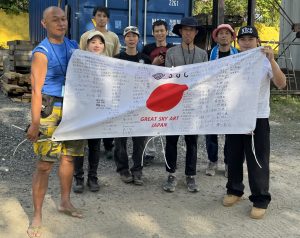
Sunday’s display will again showcase the pinnacle of Japanese Hanabi – a rare treat indeed to see outside of Japan. Let’s hope the weather cooperates.